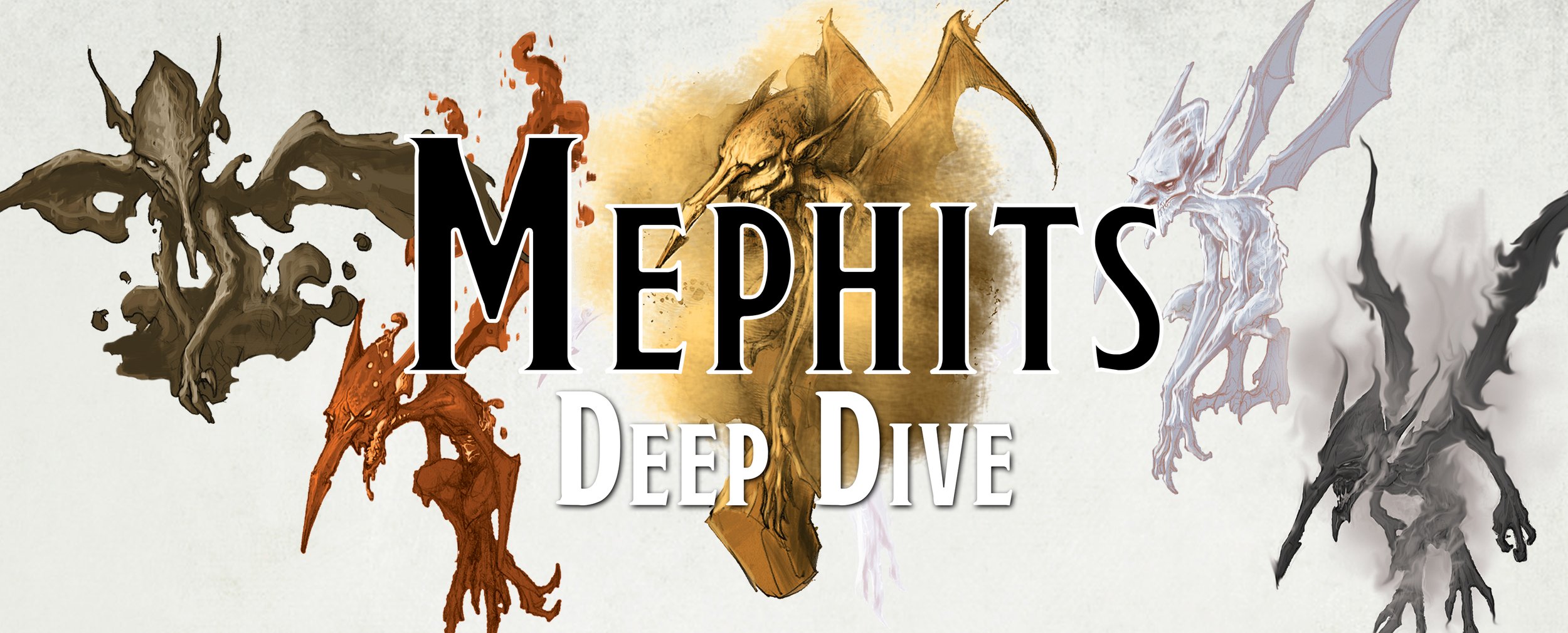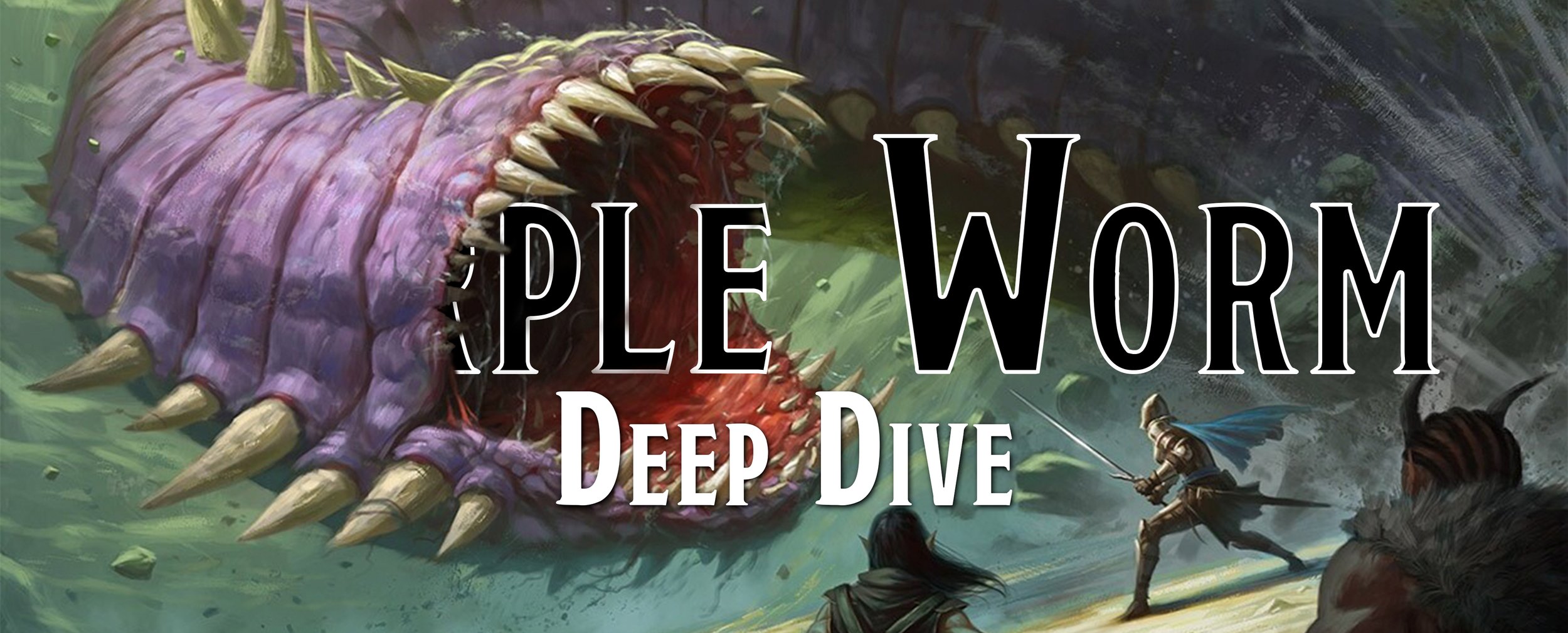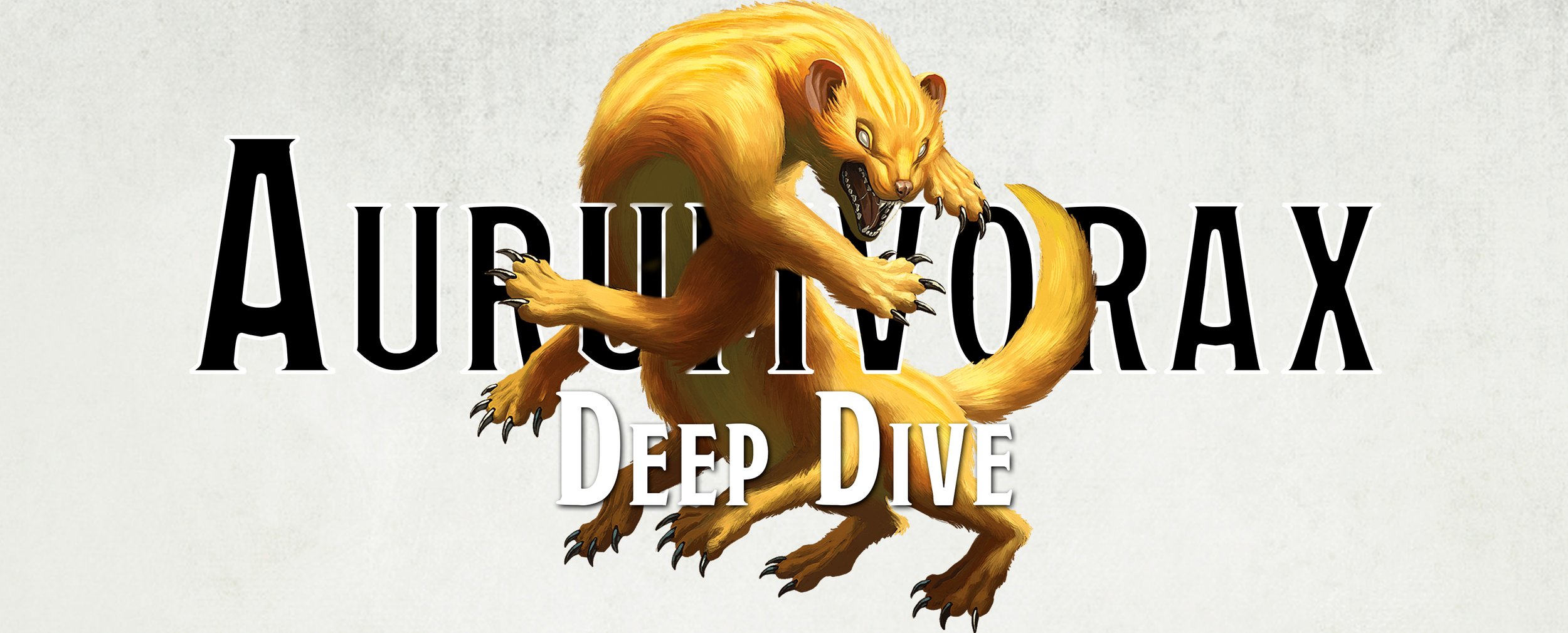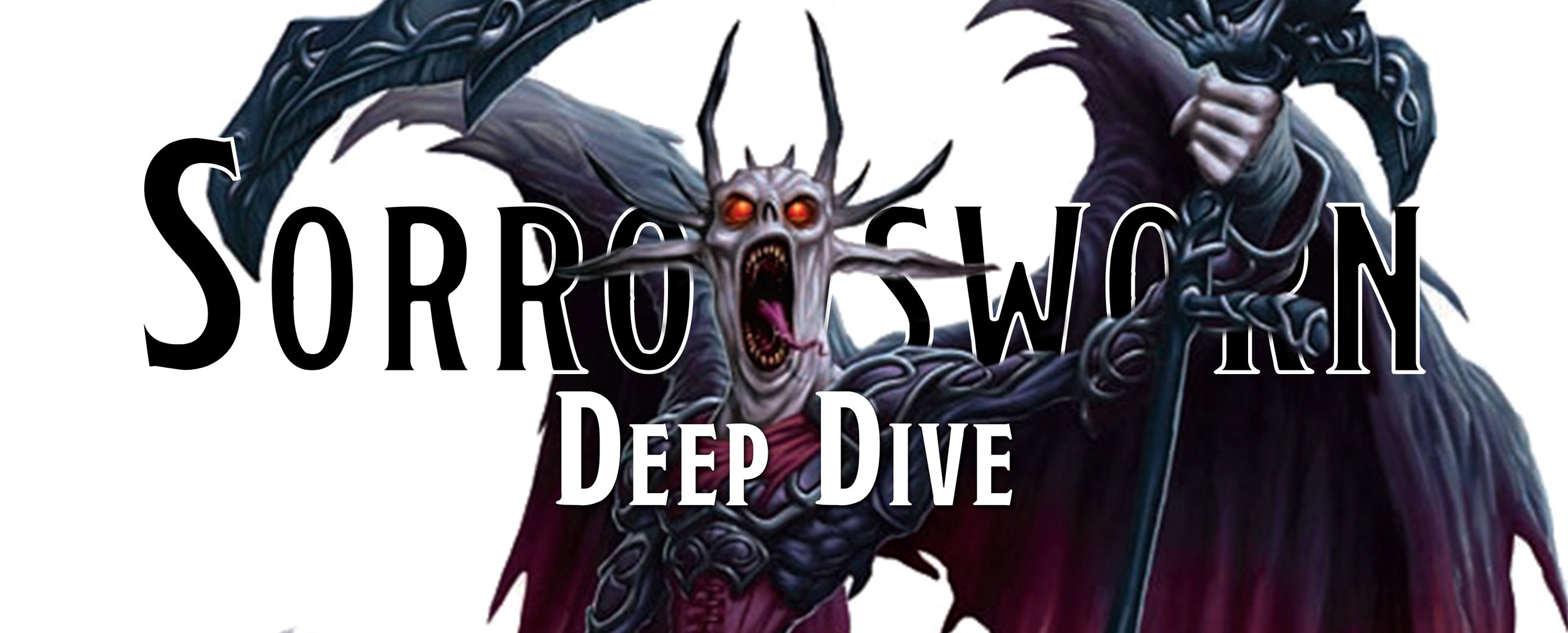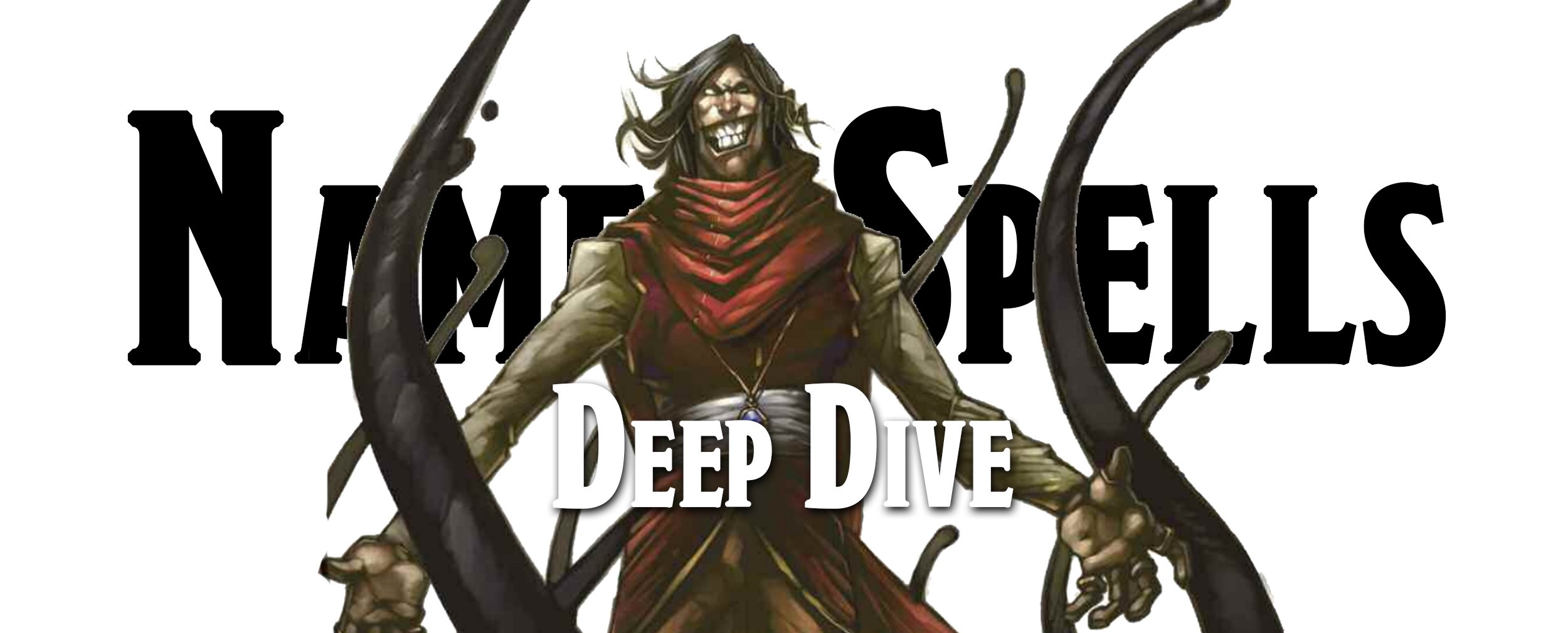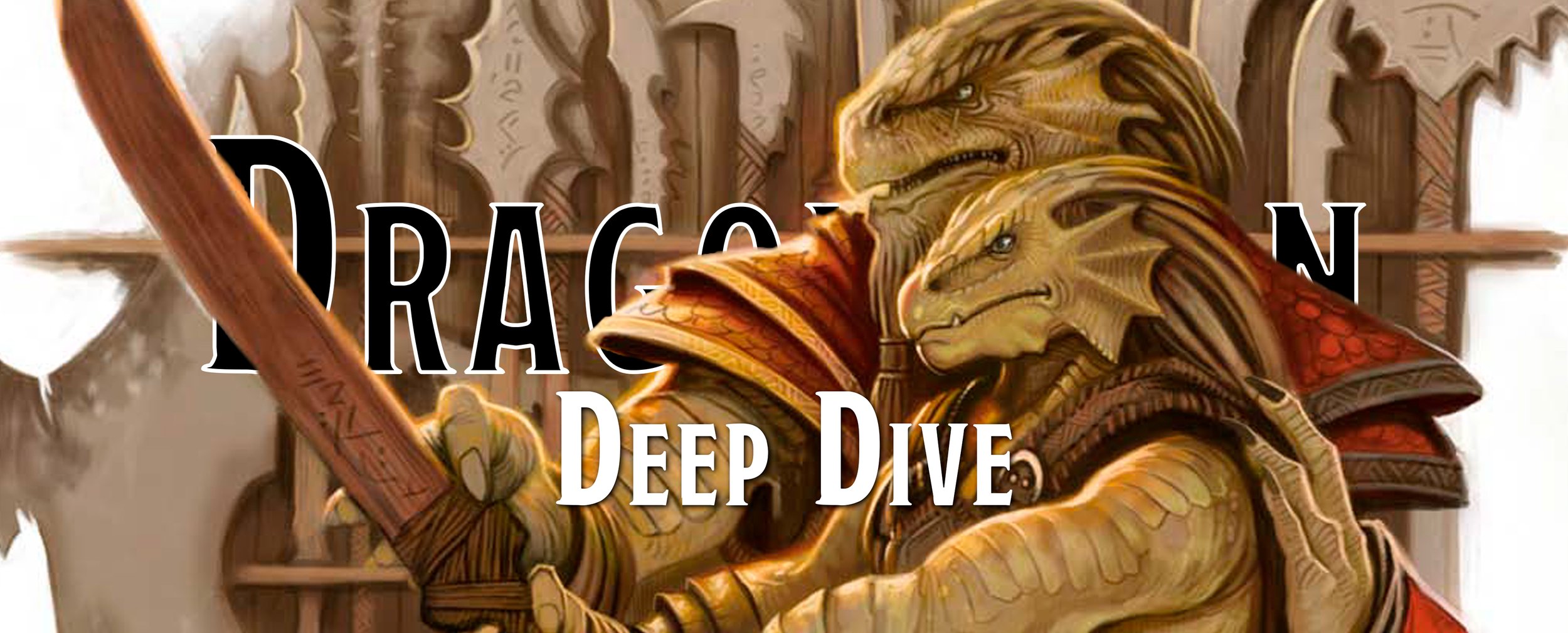Deep Dive - The Tabaxi
Also known as Catfolk, the Tabaxi originate in deep jungles and distant locales where they avoid outsiders and influence from civilization. They are content to stick to their isolationist behavior but a rare few travel the world as adventurers, bringing back to their clans weaponry, magic items, and stories of strange worlds.
This deep dive looks into the history of the Tabaxi, while similar races, like the Rakasta, introduced in the Mystara setting, and the Leonin, introduced in the Theros setting are not included. The Tabaxi are specifically jaguar or leopard humanoids while the Rakasta take the form of pretty much any type of feline and the Leonin are only lion humanoids.
AD&D - Tabaxi (Cat-Man)
Frequency: Rare
No. Appearing: 2-8
Armor Class: 6
Move: 15”
Hit Dice: 2
% in Lair: 15%
Treasure Type: Magical sword or miscellaneous weapon 5%
No. of Attacks: 3 or by weapon type
Damage/Attack: 1-3/1-3/1-3 or by weapon type
Special Attacks: Nil
Special Defenses: Nil
Magic Resistance: Standard
Intelligence: Average (high cunning)
Alignment: Chaotic Neutral
Size: M (6.5’ tall)
Psionic Ability: Nil
Level/X.P. Value: II/20 + 2 per hit point
Fiend Folio, 1981 TSR Inc.
The Tabaxi first appears in the Fiend Folio (1981) and are also known as Cat-Man, which is probably the worst superhero name we’ve heard second only to Batman. They are a race of intelligent leopard humanoids and really don’t want any interactions with other humanoids. They stick to distant tropical jungles and roam about in their small pride that rarely hosts more than 8 members at a time. These prides claim large swaths of territory but avoid other prides, and their territory, as much as possible.
Since Tabaxi avoid contact with much of the civilized world, they are all excellent hunters and, as such, are carnivores. They hunt by stalking through thick vegetation, hanging from trees, or disguising their scent with the help of aromatic herbs. When they hunt down an animal, they typically send two of their members to chase after them, forcing them to flee into the direction of a waiting Tabaxi who launches a sudden ambush, killing the creature with claws and teeth. Occasionally the Tabaxi will use weapons, though most of their weapons are made of bone or wood, and they prefer the thrill of the hunt. They’ll even keep wounded prey alive for a bit of time as they play with their food, allowing it to slowly bleed out or die from exhaustion. We don’t know about you, but the similarities between the Tabaxi and our own cats are frighteningly familiar.
While Tabaxi are going to try and avoid outsiders walking through their territory, they may attempt to sneak up on them and steal their weapons. They may end up killing the outsiders, especially if they think it’ll be an easy opportunity for metal weapons, though they're intelligent enough to know when they are outmatched. If you do happen to notice these Cat-Men before they rip out your throat with their teeth, you can try and talk to them. They speak their own language, but they know a bit of the common tongue. They won’t trade with you, as they think trade is demeaning, but they’ll probably be happy to tell you how they are going to season and cook their dinner tonight… you know, after they kill you.
2e - Tabaxi
Climate/Terrain: Tropical and subtropical jungles
Frequency: Rare
Organization: Clan
Activity Cycle: Any
Diet: Carnivorous
Intelligence: Average to Highly (8-14)
Treasure: U
Alignment: Chaotic Neutral
No. Appearing: 2-8
Armor Class: 6
Movement: 15
Hit Dice: 2
THAC0: 19
No. of Attacks: 3
Damage/Attack: 1-3/1-3/1-3 or by weapon
Special Attacks: Rear claws, 2-5 (1d4+1) each
Special Defenses: Surprise, surprised only on a 1
Magic Resistance: Nil
Size: M (6’-7’ tall)
Morale: Steady (11-12)
XP Value: 420; Clan Leader 975; Shaman, 3rd 975; Shaman, 5th 3,000
Fires of Zatal, 1991 TSR Inc.
Tabaxi first appear in the adventure Fires of Zatal (1991) and are reprinted in the Monstrous Manual (1993) where their lore is uncoupled from the Forgotten Realms. In this edition, there are two different sects of Tabaxi with those that have solid spots are called Leopard Men, pronouncing their name as ta-BAX-ee. The other Tabaxi have roseate spots, are called Jaguar Men, and pronounce their name as tah-BAHSH-ee. While they may look slightly different, and probably get annoyed if you mispronounce their name, they are quite similar to one another in terms of ecology and culture.
Tabaxi are great hunters who stick to thick jungle foliage, surprising their prey with ambushes and traps. They are known for their extreme cleverness, an acute sense of smell, and how it is almost impossible to trap or fool a Tabaxi when it comes to ambushes or hunting. They still don’t manufacture metal weapons, relying on wooden, bone, and stone weapons. But who needs weapons when you have razor-sharp claws and teeth to tear your enemies to shreds with? If you are smart enough to keep your distance, the Tabaxi will resort to attacking with bolas and javelins until they can close the gap between you and them.
Monstrous Manual, 1993 TSR Inc.
In addition, it’s not just hunters that you’ll find if you stumble across a clan’s lair. Clans are now made up of up to 7 Hunts, with each Hunt composed of up to 8 Tabaxi. This means that a clan could have as few as 4 or as many as 56 members. They’ll have several cubs in each clan, with a single elder who acts as the leader of the clan. The elder is often advised by a shaman capable of casting 3rd-level divine spells and, if you feel like foolishly attacking the clan, the clan might be under the protection of a Tabaxi Lord.
The majority of the time, Tabaxi clans are neutral or good, following deities who uphold nature, hunting, and the weather. Unfortunately, for you, not every Tabaxi clan is happy to neutrally hunt you down, but rather do it evily. Any clan that is under the protection of a Tabaxi Lord are evil and incredibly warlike, with their shamans devoted to evil powers who crave destruction and death. Tabaxi Lords are powerful creatures, though they don’t look like the humanoid felines of other Tabaxi, instead, they appear as huge jaguars or leopards. They are even more cunning and are known for their malicious and cruel natures. They can cast up to 4th-level spells, with some gaining this power as a wizard while others are gifted shamans, each focusing on necromancy, illusion, and enchantment spells.
Many think of Tabaxi Lords as cursed Tabaxi, especially since they must take a Tabaxi as a mate if they hope to produce offspring, though their offspring are always male and are always huge jaguars and leopards. Any offspring they do sire is quickly abandoned in the jungle, forced to make their way and find a clan to dominate and claim. While we aren’t sure that this is the best way for them to propagate their foul species, we are confident it is a very dangerous way as they have a lot of enemies out in the jungle, like the couatls. Couatls and Tabaxi Lords hate each other and attack on sight, not leaving the battle until one side is victorious and the other side is very much dead and probably torn to shreds.
The Tabaxi get a few mentions in Dragon magazine. In Dragon #106 (Feburary 1986) we find out that the Tabaxi can become followers of the Fantra, a group of chaotic neutral paladins. Dragon #127 (November 1987) then lets us know that five percent of Tabaxi can become berzerkers, who they call blood stalkers, which, if you ask us, is a fantastic title for such a creature. It may not seem like much, but at least the Tabaxi are getting acknowledged in a few more places.
3e - Catfolk
Medium Humanoid (Catfolk)
Hit Dice: 1d8+1 (5 hp)
Initiative: +2
Speed: 40 ft. (8 squares)
Armor Class: 15 (+2 Dex, +2 leather, +1 natural), touch 12, flat-footed 13
Base Attack/Grapple: +1/+2
Attack: Rapier +3 melee (1d6+1/18–20) or longbow +3 ranged (1d8/×3)
Full Attack: Rapier +3 melee (1d6+1/18–20) or longbow +3 ranged (1d8/×3)
Space/Reach: 5 ft./5 ft.
Special Attacks: —
Special Qualities: Low-light vision
Saves: Fort +3, Ref +2, Will –1
Abilities: Str 13, Dex 15, Con 12, Int 10, Wis 9, Cha 10
Skills: Listen +5, Move Silently +6
Feats: Weapon Finesse
Environment: Warm plains
Organization: Solitary or gang (2–5 plus 0–1 tigers)
Challenge Rating: 1/2
Treasure: Standard
Alignment: Usually chaotic neutral
Advancement: By character class
Level Adjustment: +1
Miniatures Handbook, 2003 WotC
Now known solely as the Catfolk, they come creeping out of the Miniatures Handbook (2003). Most of them now appear as the cross between a lion and a human, unlike before as a jaguar or leopard, though it makes sense as they are no longer in jungles but in grassy plains. Despite their potential to have great strength, they are typically thin and wiry who focus on dexterity and speed.
If they are forced into a fight or decide to jump in on one, they use light weapons like a rapier and, in fact, they don’t even have a claw or bite attack to utilize in this edition. They remain as ambush predators, but now they rely on their longbow to bring down their prey, switching to melee weapons if they feel they have the upper hand or running off across the prairie if they picked on a creature a bit too tough for them.
These Catfolk are now in on civilization, though they are still pretty wary of outsiders. They wear clothes and armor produced by cities and the text even specifically points out that they are even capable of wearing belts. While we think our cats would look cute in a belt, we aren’t sure why that specifically is called out for the Catfolk and how civilized they can dress. If you are hoping to talk to these well-dressed hunters, who even completed their look with a belt, then you better be good at speaking cat. Catfolk has a language all their own known as Feline with each tribe having its own dialect of the language. While they will speak Common, and even Gnoll and Halfling, they prefer to stick to Feline so they can mock you and you won’t understand them.
Races of the Wild, 2005 WotC
If you have long been yearning for the chance to roleplay as your house cat, details on their playable race appear in Races of the Wild (2005). Before you get too excited though, be prepared that it isn’t all warm naps in the sun or violently ripping apart your prey with your claws. Catfolk are considered a powerful race to select and so if you do pick one, you are permanently behind a level during your adventures compared to your ‘normal’ human friends. This simply means that once they hit second level, you’ll be taking your first level in whatever class you want, probably ranger since Tabaxi has that as their favored class.
With this reduced level, you have to get something good right? Tabaxi characters get a +2 boost to their Charisma and a +4 boost to their Dexterity, they have a 40-foot walking speed, low-light vision, a bonus to their AC, and are given a bonus to Listen and Move Silently checks. While it may not seem a lot, it largely comes from their boosts to Dexterity and Charisma since it is difficult to increase your ability scores without spending a ton of money on magic items to increase them. In fact, a character only gets to increase a single ability score by one point every four levels, meaning that by the time they are level 20, they only get five opportunities to do so.
If you aren’t deterred by this penalty, this book also offers a great insight into Catfolk society and how they interact with adventurers. Since Catfolk already roam open grasslands and are largely nomadic, they make natural adventurers in search of adventure and excitement. Catfolk like to move in sudden bursts of excitement, so combat gives them quite a thrill as they can explode forward, attacking and slicing in quick succession before it suddenly ends. They are prone to these outbursts even with just their emotions as they quickly offer their opinions about pretty much anything, but then never feel the need to repeat themselves. They find people who repeat their opinions over and over to be obnoxious and will often just shut down any future conversations with them or just wander off to find something entertaining to do.
If you are trying to name your Catfolk adventurer, first let us just say that your party is not going to appreciate you. Catfolk names often begin with “D”, “M”, or “N” and then contain multiple “S” and “R” sounds, the more the better. This means that you might call yourself Dessirris, Nermissar, Densharr, or Mianissa, though it doesn’t have to be that complicated and you could just be Nera or Dessa.
Not only do you have an impossible to pronounce name to share with your fellow adventurers, but you are also a hoarder of tokens to remind you of previous life experiences and adventures. Catfolk enjoy carrying around random things that remind them of happy memories, great losses, or experiences they wish to recall, only parting with these special trinkets when they meet a long and fast friend or they die. They don’t really get a choice about what to do with their trinkets in death, but otherwise, they are careful to hand out these trinkets to their friends, and only after they explain the story and feelings they get from their tokens. For those who are friends with Catfolk, better get a bag of holding to carry all the memories you make with them!
5e - Tabaxi
Volo’s Guide to Monsters, 2016 WotC
After being denied a place in the 4th edition, the Tabaxi undergoes a transformation of sorts when they make their glorious return in Volo’s Guide to Monsters (2016) as a playable race and not as a horrific monster to kill and steal their experience points. They are now described simply as catlike with no specifics as to exactly what they look like, though their names get even more complicated. Now their names are based on astrology, prophecy, clan history, and other esoteric nonsense to create such names like Cloud on the Mountaintop, Left-Handed Hummingbird, or Skirt of Snakes which… make it really difficult to call out their name when you need them to help, good thing they are willing to accept nicknames and you can call them Cloud, Bird, or Snake.
The biggest change for the Tabaxi comes that, despite how most prefer to dwell in their small, tight clans; there is a great Cat Lord who is the deity of Tabaxi and gives each of his children a specific feline trait. For some, they are given curiosity and they are compelled to travel the world in search of artifacts, lore, and weird stories to bring back to their homes. These adventuring Tabaxi are celebrated by their clan simply because it keeps them abreast of the news around the world instead of being ignorant isolationists. So be ready to stock up on postcards before you head out into the world. Of course, adventurers aren’t the only ones who travel as there are traveling tinkers and minstrels who travel in colorful wagons, putting on shows and looking for exotic items and stories to take with them.
If being a Tabaxi sounds fun, then those looking to create a catlike character can breathe a sigh of relief for this edition doesn’t make them lose a level to play as a Catfolk. While the bonuses are reduced, they still keep bonuses to their Dexterity and Charisma, their walking speed is only 30 feet, proficiency in perception and stealth, and they finally get their claws back! Their claws can now be used to climb up walls, clamber up cliffs, and even slash their opponents to ribbons as unarmed attacks. In addition, they get the ability to truly show off the spastic energy of 3rd edition where they can suddenly double their speed for a turn, allowing them to cover lots of ground.
For those playing as a Tabaxi, it’s important to know that Tabaxi are often fixated on specific things. These fixations are fueled by their curiosity and it changes every few days where their fixation jumps from topic to topic with little thought of what came before. It is typically accompanied by a strange quirk like stealing items absentmindedly or citing out random trivia from your constant fixation with lore and stories gathered across your travels. This can lead to unforeseen hijinks and colorful roleplay, just don’t expect the Tabaxi to remember how the fight they got you into even started.
The Tabaxi are isolationists, but they are slowly leaving their jungles for grasslands and even cities where they can find interesting artifacts and stories to bring back to their clans. Most Tabaxi appear as humanoid jaguars or leopards, while others take on the guise of lions, and maybe even the majestic house cat.
If you enjoy our Deep Dive series, consider
supporting us on Patreon and following us on Twitter!





























